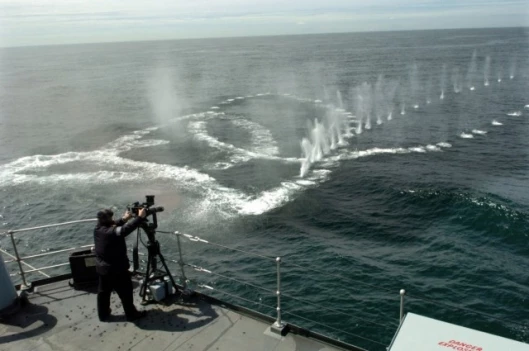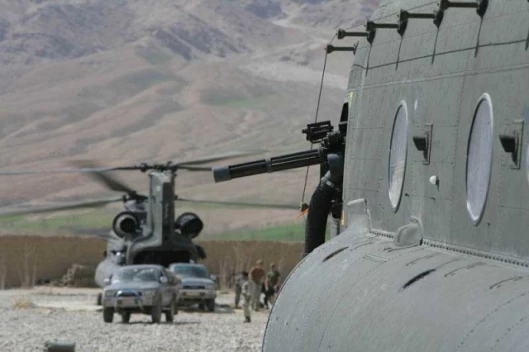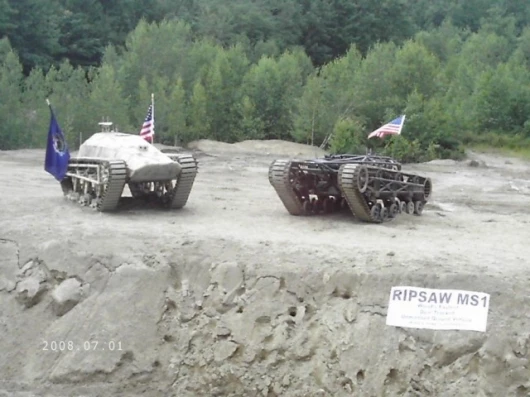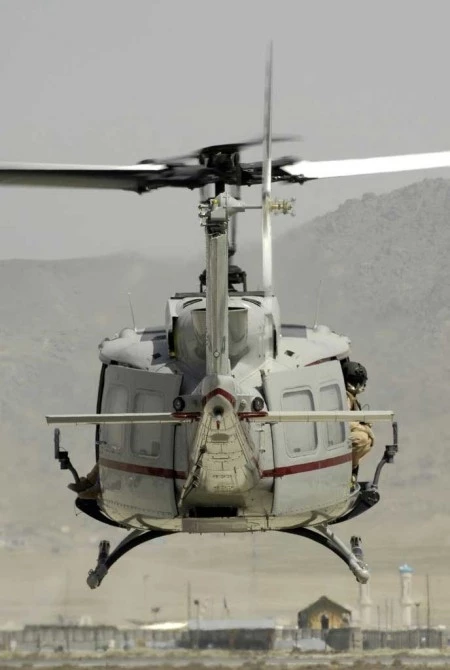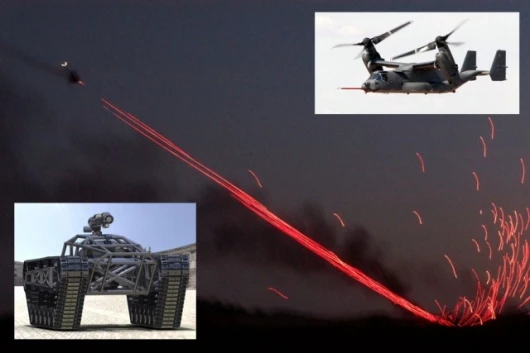Just over a 140 years ago, Richard Gatling's famous multiple barrel invention became the scourge of the battlefield with its fearsome firepower and was used by colonising European powers to decimate the warriors of the non-industrialized nations they sought to conquer. Nowadays, the electrically-powered Dillon Aero M134D Minigun is taking the concept to new heights, using six barrels to fire up to 4,000 7.62 MM bullets per minute. As the modular M134D system can be easily adapted to any platform, it is finding favour in a host of new fearsome forms, most notably in the BAE-built Remote Guardian System being tested beneath V-22 Ospreys. Perhaps even scarier is the prospect of the weapon being used aboard the Ripsaw MS-1, a tracked 650-horsepower Unmanned Ground Vehicle (UGV) under development which is capable of accelerating to 50 mph from standstill in around four seconds, turning in its own length and taking a 30 foot high 45 degree hill in its stride. Now is not a good time to be on the wrong team. Proof? Watch this!
Videos of the Dillon Aero M134D can be seen here, here, here and here.
The Dillon Aero M134D is an electrically powered, six barrelled Gatling gun capable of fixed firing rates of either 3,000 or 4,000 7.62 MM NATO rounds per minute. It can be powered by AC or DC power sources and as it is designed as a modular system, it can be easy adapted to any existing platform. This flexibility allows it to perform equally well in the fixed-forward fire or crew served mode. It is simple to load and with an average of 30,000 rounds between stoppages, one of the most reliable weapons in the world.
Now do the sums - 3,000 shots per minute equals 50 shots per second. No other 7.62 MM weapon comes close to this rate of fire and gives it unique capabilities because its extreme shot density enables it to suppress multiple targets in compressed periods of time.
Additionally, fast guns are more accurate than slower firing weapons. There are two reasons for this and both are a result of the high cyclic rate. First, Gatling guns experience virtually no recoil. The M134D fires 50 shots per second, meaning there is 1/50th of a second between each shot. Because the time between shots is so short the M134D, on a properly engineered mount, simply moves aft with the first shot with no tendency to pitch up or yaw.
This makes the weapon far more stable and easier to aim. Secondly, in the time it takes to fire one round from an M-240, four rounds are fired from the Gatling gun— this makes for a very dense shot grouping. This also means that with four times the number of impacts in the target area, there is a four-fold reduction in the amount of time it takes for a gunner to see his hits and adjust his aim. Additionally, fast guns are more accurate when it comes to reduced error correction.
When a gunner fires on a target, he must see the impacts to know exactly where the gun is aiming. As the amount of time between each impact increases, the amount of error caused by target movement or gun movement also increases. The amount of error can grow quite large due to helicopter movement, gun movement, and target movement. As the range to the target increase to 100 meters or more, the problem becomes severe.
However, by increasing the number shots per second, the amount of time between each observed impact is greatly reduced. But just how much more accurate is the M134D? Four times the number of shots should equal four times the number of hits, right? Wrong. Surprisingly, the M134D is, on average, nine times more likely to score hits. This is true because of the combined effects of high rate of fire, extremely dense shot grouping, and high weapon stability. Since Gatling guns are more effective and more reliable than conventional "gas operated" guns, fewer weapons are required to cover a target area. Fewer guns mean fewer bodies to man them and fewer platforms to support them. This translates into cost savings.
Accordingly, the Dillon M134D is a true force multiplier. On land the M134D is currently deployed worldwide for convoy escort, border patrol, and VIP protection. In the naval role Gatling guns are employed in the force protection role on board the US and Royal Navy blue water fleet, and as fire support weapons on Special Operations boats.
However, it is in the helicopter that the M134D is most often found. It is used throughout the world, on board the Bell UH-1, Bell-212, Bell-412, AH-6, H-60, H-47, and H-53. The M134D, or component systems, are currently employed by the US Army, US Navy, US Marine Corps, US Air Force, the United Kingdom, Bahrain, Jordan, and Colombia. Dillon Aero is currently delivering new production M134D Gatling Guns. Dillon also offers Service Life Extension kits for older generation General Electric GAU- 2B/M134 Miniguns.
The RGS' Dillon Aero M134 fires 3,000 rounds a minute out to a maximum range of 1,000 meters. At the same time, the RGS is built to accommodate a .50-cal machine gun or 40mm grenade launcher.
U.S. Air Force Special Operations Command is developing a CV-22 Osprey armed with a remotely operated M134 Gatling gun able to lower beneath the aircraft and fire at targets in any direction, providing a 360-degree attack capability.
BAE Systems will develop the interim all-quadrant defensive weapon system for the CV-22. The belly-mounted system is remotely operated and capable of delivering accurate, sustained fire throughout the CV-22's flight envelope to provide vital protection to the aircraft, its operators, and the Special Operations personnel it carries.
The weapon system is based on BAE Systems' Remote Guardian System, which it has been developing for three years and was unveiled in October 2007 at the Modern Day Marine military exposition in Quantico, Virginia.
The BAE-built Remote Guardian System, could also be picked up by the Marine Corps for use on its growing fleet of V-22 Ospreys.
The RGS' Dillon Aero M134 fires 3,000 rounds a minute out to a maximum range of 1,000 meters. At the same time, the RGS is built to accommodate a .50-cal machine gun or 40mm grenade launcher. The U.S. Army is also taking to BAE about the RGS, BAE officials said.
"It has applications for airborne fixed wing, UAS [and] rotary wing. It has application in the maritime environment, specifically for fast boats. On top of that, it also has applications on the ground," said David Adamiak, BAE business development manager.
One of the most exciting potential platforms for the RGS is the Howe Brother's Ripsaw MS-1 currently under development . The Ripsaw's innovative long-travel suspension system and tracked drive system give it awesome capabilities for an Unmanned Ground Vehicle (UGV) – the 650 horsepower Duramax 6.6L V8 diesel engine delivers 900 ft/lbs of torque and can propel its 6500 pound girth to 50 mph from standstill in around four seconds. By spinning one track backwards, it can turn in its own length and take a 30 foot high 45 degree hill in its stride. It is very unlikely that you'll outrun the Ripsaw and unlike most tracked vehicles, it's very unlikely to throw a track – the "shark-fin" track system was inspired by the chainsaw. The ever-entertaining David Crane has the full story on the Ripsaw at Defense Review.




